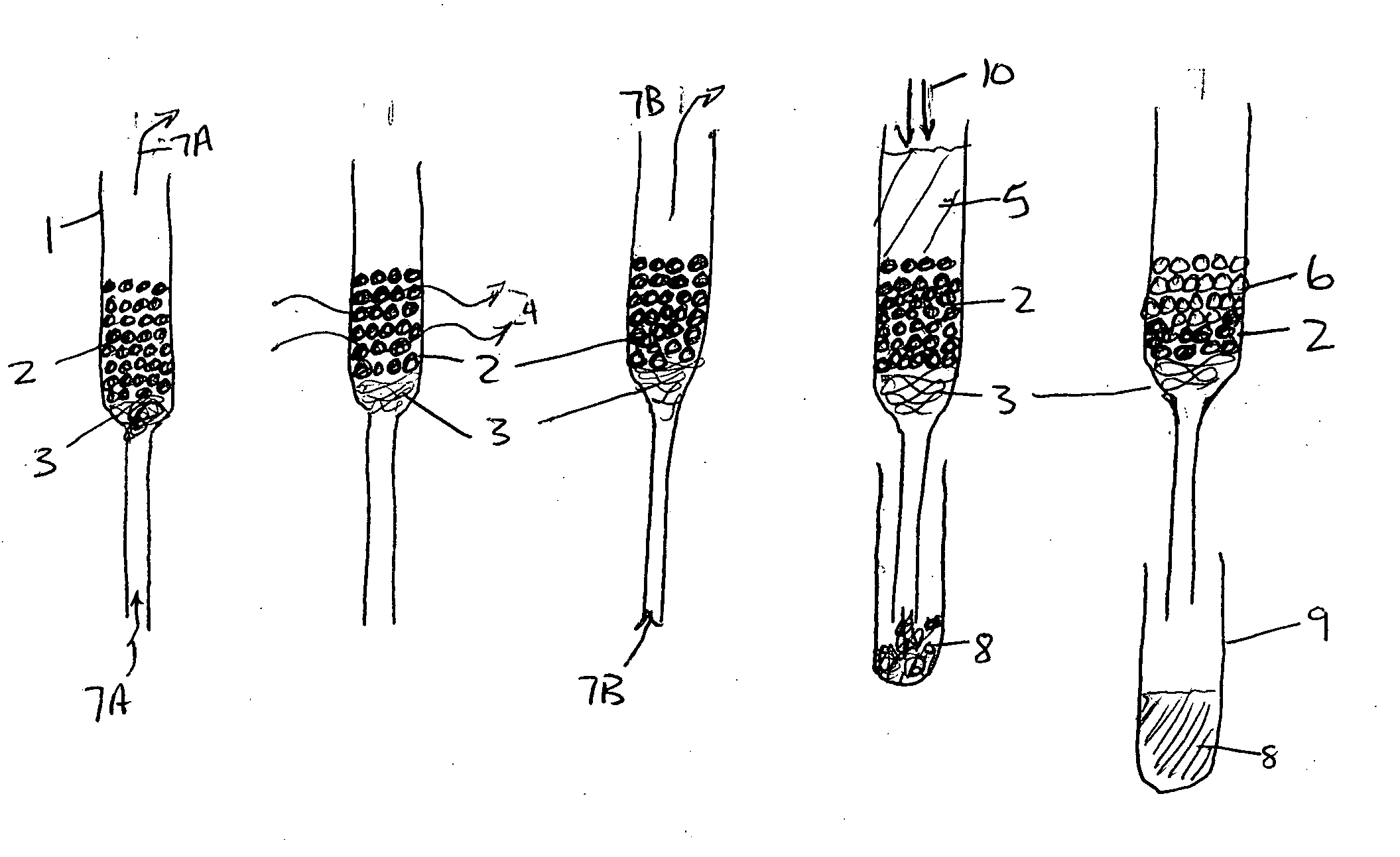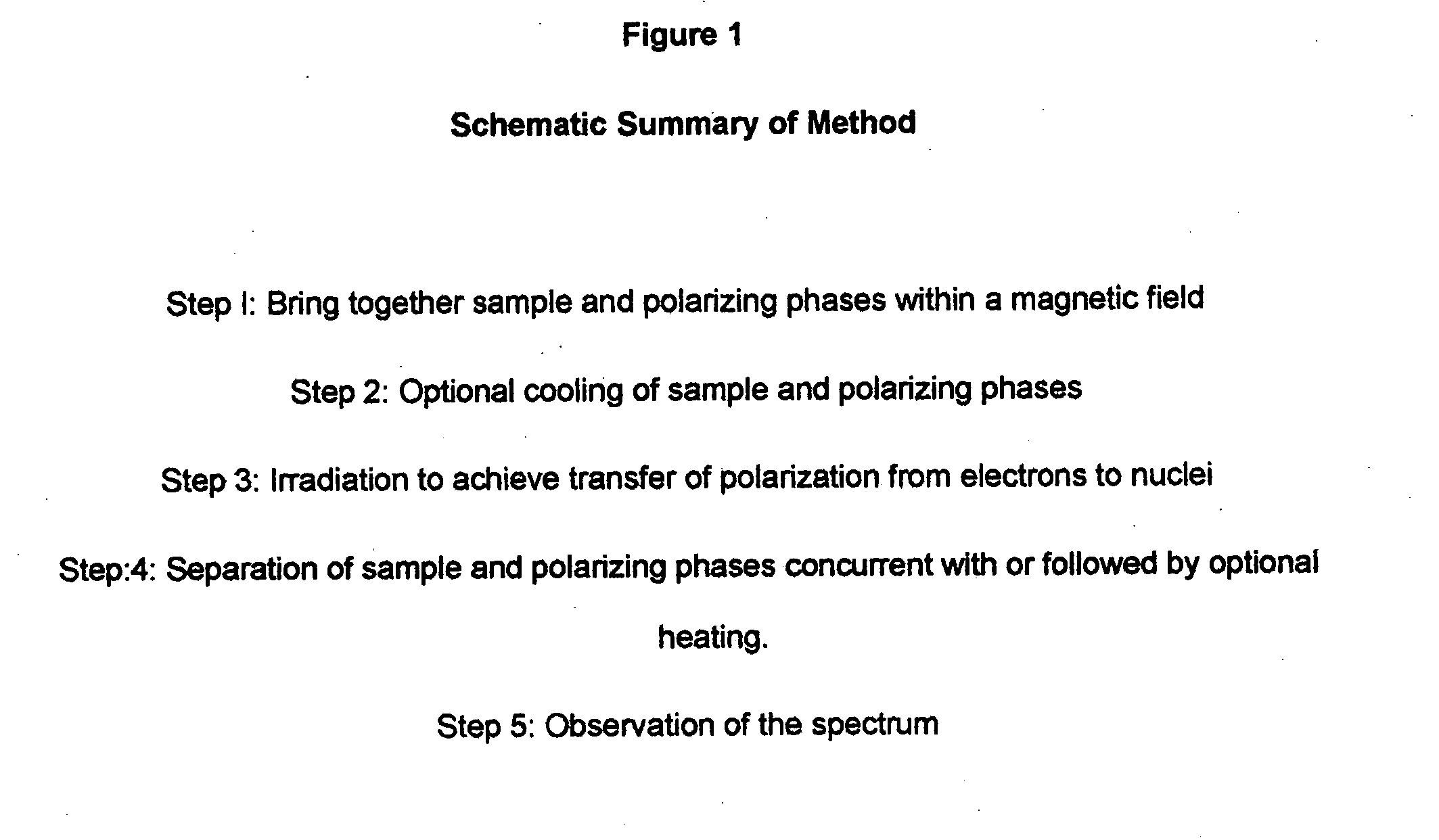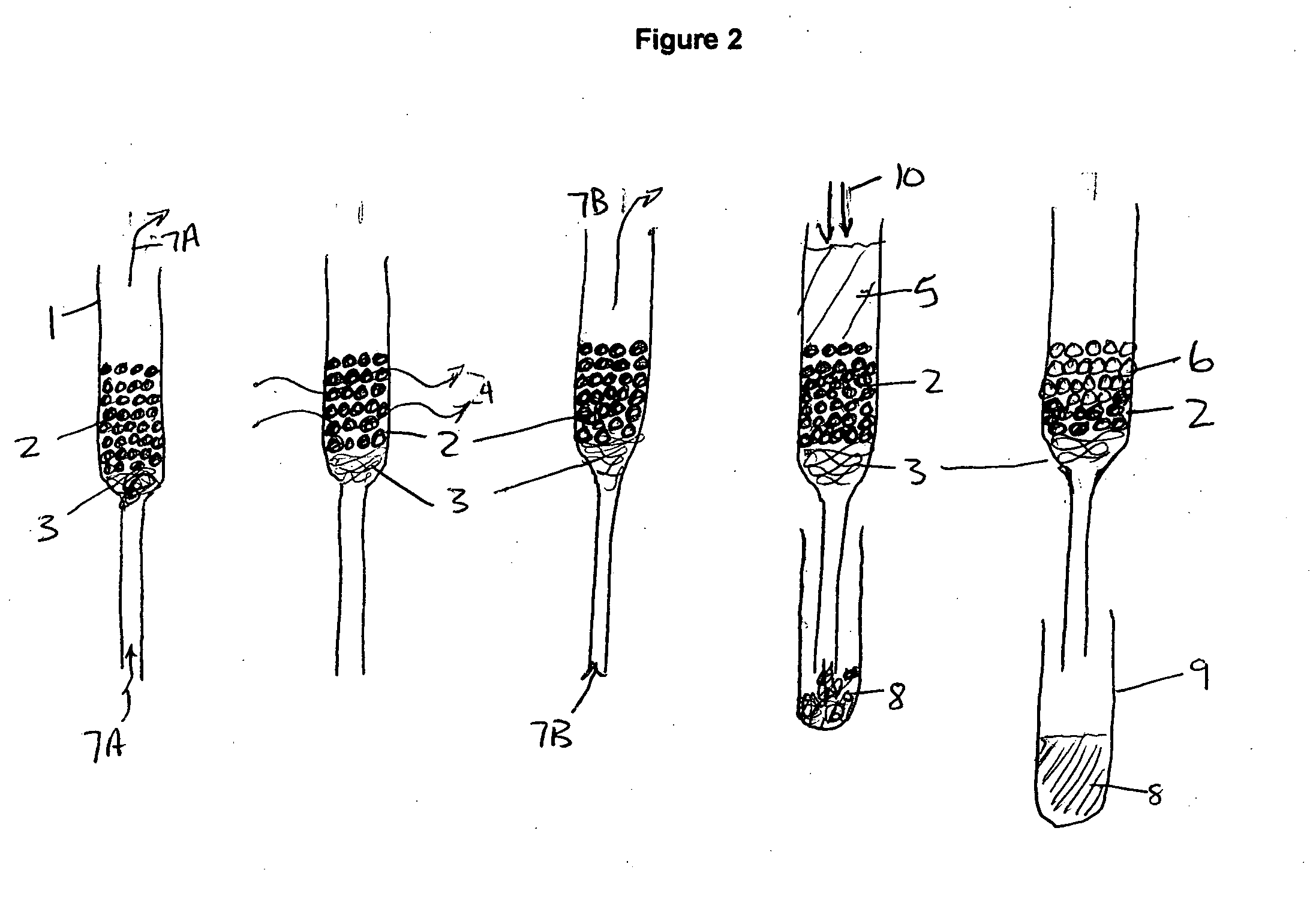Method of improving magnetic resonance sensitivity
a magnetic resonance and sensitivity technology, applied in the field of nuclear magnetic resonance (nmr) spectroscopy, to achieve the effect of improving the sensitivity of the nmr/mri experiment, increasing the sensitivity of the analysis of the nmr, and enhancing the mri imag
- Summary
- Abstract
- Description
- Claims
- Application Information
AI Technical Summary
Benefits of technology
Problems solved by technology
Method used
Image
Examples
example 1
[0031]In this example the polarizing phase is a solid phase with polarizing agent TEMPO chemically bonded to the surface of MCM-41 type silica particles. The preparation of several of these materials has been described in detail by Brunel et al (Brunel, D.; Fajula, F.; Nagy, J. B.; Deroide, B.; Verhoef, M. J.; Veum, L.; Peters, J. A.; van Bekkum, H. Appl. Catal., A 2001, 213, 73-82.). In particular, the TEMPO bound by an amide linkage to MCM-41 obtained by the reaction of 3-aminopropylsilylated MCM-41 and the N-hydroxysuccinimide ester of 4-carboxy-TEMPO in dry THF is useful. Enough of the silica to give a dry volume of 2.5 ml is combined with 0.5 mg naphthalene and 10 ml deutero-chloroform. The slurry is placed in a 25 ml round bottom flask and the chloroform is evaporated on a rotary evaporator. The TEMPO bound silica with the naphthalene adsorbed on its surface is placed in a 5 mm id glass syringe containing a glass wool filtering plug sufficient to hold the silica in place while...
PUM
 Login to View More
Login to View More Abstract
Description
Claims
Application Information
 Login to View More
Login to View More - R&D
- Intellectual Property
- Life Sciences
- Materials
- Tech Scout
- Unparalleled Data Quality
- Higher Quality Content
- 60% Fewer Hallucinations
Browse by: Latest US Patents, China's latest patents, Technical Efficacy Thesaurus, Application Domain, Technology Topic, Popular Technical Reports.
© 2025 PatSnap. All rights reserved.Legal|Privacy policy|Modern Slavery Act Transparency Statement|Sitemap|About US| Contact US: help@patsnap.com



